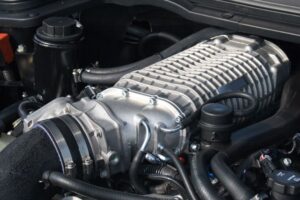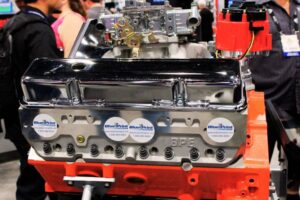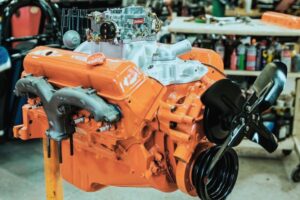There is nothing sweeter than the sound of a well-tuned car engine revving up to its limits for many gearheads. Do you know how to rev a car engine?
It is pretty easy to rev a car engine, and it only takes a couple of steps:
- Turn on the car engine
- Leave the gear shift in Park
- Wait 10-20 seconds
- Slowly step on the gas pedal
- Slowly release the gas pedal to return the RPMs to normal
Read on to learn more about how to rev an engine, what it does for your car, and when you should avoid doing it.
How to Rev a Car Engine

Here are the steps on how to safely rev your car’s engine:
1. Turn on the Car Engine
Make sure that your shifter is in Park or Neutral. Put the key in the ignition and turn it until the engine starts.
2. Leave the Gear Shift in Park
If you want to know how to rev an automatic car, leave the shifter in Park. Regarding how to rev a manual car, leave it in Neutral. This will ensure that your vehicle will not suddenly lunge forward or back when you step on the gas.
Why True Gated Shifters Are Rare Today
3. Wait 10-20 Seconds
It is inadvisable to rev the engine right after it starts. The main reason is that the engine oil did not have enough time to circulate and lube all the parts. Revving the engine right after starting might damage the engine.
4. Slowly Step on The Gas Pedal
When revving the engine, one does not floor the gas pedal immediately. You should not floor it at all. The tachometer has a red line for a reason.
You should not push your engine to its limits if you can avoid it. Flooring the gas pedal will put a lot of unnecessary strain on the engine, thus shortening its service lifespan.
5. Release the Gas Pedal to Return the RPMs to Normal
Just as you should not floor the gas pedal, you should avoid immediately taking your foot off it. If you slowly rev the engine, you should gradually let the RPMs go back to normal.
Do you want to know how to rev a car engine while driving? You can only do it when you have a manual transmission car.
The reason is that you will need to step on the clutch and then step on the gas. However, this is not advisable as this would cause your car to lunge forward. You might also damage the transmission.
What Does Revving the Engine Mean?
To “rev” an engine means you push on the gas pedal while the car is neutral or parked. Doing this will increase the speed at which the engine’s crankshaft is spinning. This is the Revolutions Per Minute (RPM), hence “rev.”
You can only rev the engine when the gear shift is in Park or Neutral in an automatic transmission car. You can rev the engine when the shifter is neutral in a manual transmission car. If you press your foot down on the clutch, you can also do so.
Why Do People Rev Their Engines?
The practice of revving the engine before turning it off was usually for older cars. You may have seen your dad or grandfather revving the engine before turning it off. The reason is that it is what the older model cars supposedly need.
Eliminates Any Fuel or Fuel Vapors in the Intake and Valves
Car manufacturers and many mechanics said you need to rev the car engine. This eliminates any fuel or fuel vapors in the intake and the valves. Residual fuel in the engine will make it harder to start the next time. Revving the engine allows you to burn the residual fuel.
Fill the Carburetor with Fuel
Also, old-school gearheads believed that revving the engine before shutting it off would fill the carburetor with fuel. They say that this will make it easier to start next time, especially when it is cold outside.
Do You Need to Rev the Engine Today?
Some people still believe that they need to rev the engine to fill up the carburetor. Despite that, most of them drive cars with fuel injection systems. This means that their cars’ engines do not even have carburetors anymore. Their “reason” for revving the engine is already moot.
However, the carburetor argument was debunked even back in the day. The first reason is the function of the float chamber of the carburetor. This feature will fill up regardless of whether the engine is running on high RPM or idling.
Second, the moment the ignition is on, it also causes the fuel pump to work. This means it does not need to fill up the carburetor in the first place. So, even back in the day of carbureted engines, it was already unnecessary to rev up the engine before turning it off. It also only wasted fuel.
Benefits of Revving the Engine
Even though I said that revving the engine is unnecessary, that does not mean that it is not good. There are times when revving the engine until it redlines is good.
Keep the Car’s Parts in Good Working Order
For one thing, redlining the engine does keep its certain parts in good working order. Also, this practice will reveal engine problems that are not so apparent when running in its normal RPM range.
However, the important thing is that you only rev your car’s engine maybe once or twice a week. Most importantly, you should wait a couple of minutes for the engine to warm up before revving. Revving a cold engine is the one thing that you should not do.
Why You Should Not Rev Your Engine
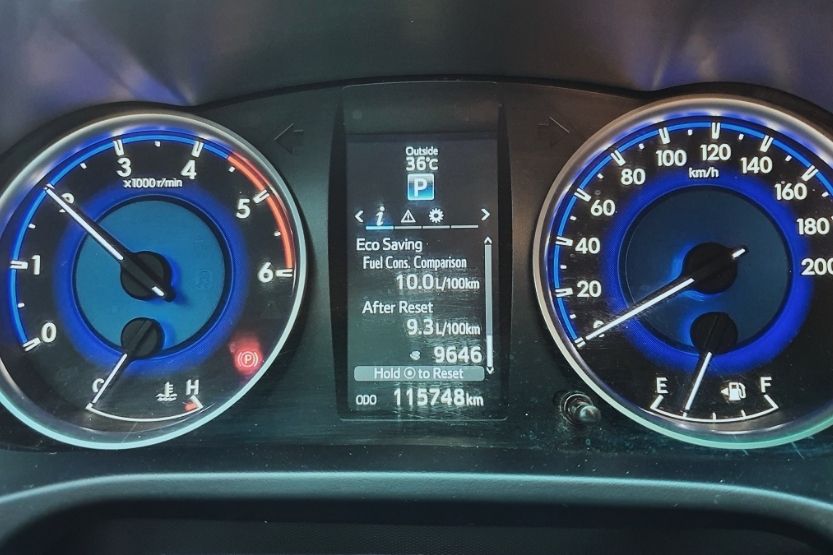
Although it has its benefits, you should not rev your engine when unnecessary. This is especially true when cars have complicated and highly efficient fuel injection systems.
Here are some of the reasons why you should not rev the engine of your car:
1. Puts Unnecessary Stress on the Engine
Many people think that revving their engines whenever possible is beneficial to their car, but the opposite is true. In theory, it seems to make sense that revving the engine will make it warm up faster. It could also make the oil circulate faster, especially during cold mornings.
Revving a Cold Engine Causes Damage
However, the truth is that revving the engine while it is still cold does more damage than good. The biggest reason is that it will cause the temperature to rise too quickly.
Shift in Temperature Will Put a Lot of Strain on Engine’s Components
This sudden shift in temperature will put a lot of strain on small engine components. This will then result in them failing long before they should. If you do rev the engine, which is sometimes irresistible, always do it when the engine has warmed up.
2. Forces the Valves to Stay Open Too Long
Serious Damage to the Valve Train
When you rev your engine, the rising temperature is just one problem you have to deal with. If you hold the rev too long and do it too often, it will seriously damage the valve train.
Cause a Mechanical Problem Called Valve Float
If your valve is open too long, it will eventually cause a mechanical problem called valve float. This is when the valve gets stuck between the closed and open positions.
Compression Loss and Engine Misfire
The result would be a loss in compression and a misfiring engine. This means that your engine is not producing nearly as much power as it should.
Valve Spring Replacement
Although fixing this problem is relatively easy. Your mechanic will need to replace the valve springs. However, if you don’t notice that your engine is misfiring early, it will cause serious engine damage later.
If you are unfamiliar with how your engine should sound, you might not notice misfiring cylinders.
3. May Throw the Connecting Rod
Connects the Crankshaft to the piston
The connecting rod has a vital role in your engine. It is what connects the crankshaft to the piston. Throwing a rod means that the connecting rod breaks as the piston goes up or down.
Effect of Broken Rod
When the rod is broken, either one of two things will happen. When the rod throws while the piston goes up, the piston will continue on its course.
It will permanently jam itself in the head of the cylinder. If the rod throws while the piston goes down, the broken rod will be traveling with force. This would be of great force that it will rip through the solid billet aluminum engine block.
Engine Replacement
Whichever one happens, you can be sure that you are in for costly repairs. In most cases, throwing a connector rod means replacing the engine entirely.
4. May Cause Severe Damage to the Clutch and Flywheel
Clutch Connects and Disconnects the Engine from the Wheels
You may be thinking that the gas pedal is the one that makes your car move forward. No, it is the clutch. The clutch connects and disconnects the engine from the wheels. The car will not move forward with a disengaged clutch even when you step on the gas.
Extreme Heat Will Cause Damage
The extreme heat will still cause damage over time by revving your engine too often, even with a disengaged clutch. Plus, it could damage the flywheel and deteriorate the clutch lining. There is also a chance for the hydraulic cylinders to control the clutch break.
Whatever scenario happens, one thing is sure; it will result in a sidelined car. This means you will need to spend quite a lot of money to fix the issue.
5. It Wastes a Lot of Gas
With gas prices the way they are now, you should not just waste fuel unnecessarily revving your engine. Whenever you rev the engine to the upper RPM limits, especially when redlining it, you draw a lot of gas.
Engine Burns More Fuel by Running on Higher RPMs
Your car’s engine burns more fuel by running on higher RPMs than usual. This would be regardless of whether the car is moving or not. You might justify yourself by saying that you don’t do it often. However, the amount of wasted fuel adds up eventually.
Misfiring Cylinder Still Burns Fuel
In addition, as mentioned earlier, revving the engine might cause the engine to misfire. A misfiring cylinder is still burning fuel. However, it does not deliver as much power as it used to, which means it is wasting fuel.
Bad Driving Habits That Damage Your Car
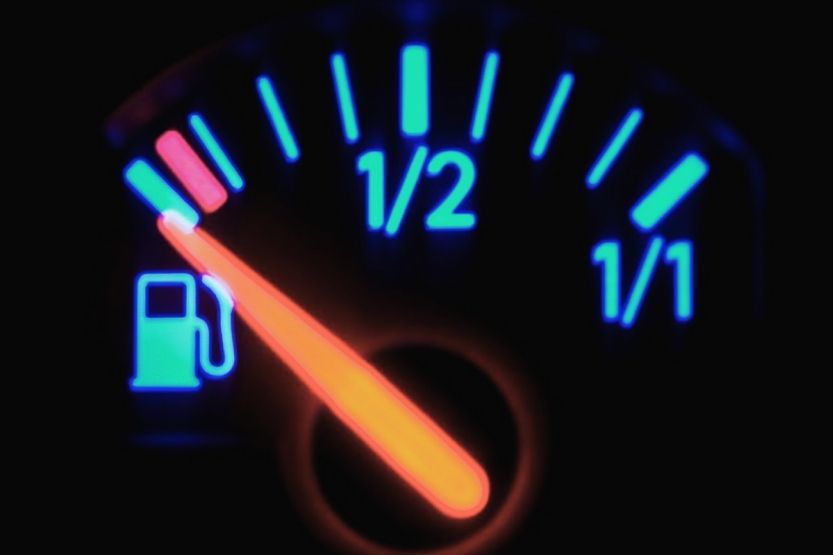
Many mechanics and veteran drivers consider revving the engine a bad motoring habit that you need to break immediately. However, revving the engine is just one of the bad driving habits that you need to correct.
Here are some of the others that you also need to deal with:
1. Letting the Fuel Get Too Low or Empty
Although letting the fuel gauge get dangerously low because of fuel prices nowadays is commonplace, it is not advisable.
Running Dry Fuel Pump
If the fuel level gets too low, the fuel pump, which is a submersible type, will be running dry. This makes it more prone to damage. It is even worse if you let the tank go empty that it is running on fumes.
Expensive Fuel Pump Replacement
Getting a replacement fuel pump is expensive enough. The labor costs can get a bit high as well. Do not let your low fuel warning light go on too often. Try putting a gallon or half a gallon in your tank whenever the fuel gauge gets uncomfortably low.
2. Slamming on the Brakes
Unsafe to Tailgate the Vehicle in Front of You
First of all, it is very unsafe to tailgate the vehicle in front of you. This is especially true if you have to slam on the brakes so that you do not rear-end it. One of the biggest causes of road accidents in the US is driving too close to the vehicle in front.
Give Ample Braking Distance Between You and the Car in Front of You
This means you have to avoid doing it. Always give ample braking distance between you and the car in front of you on the road.
Effects of Making an Abrupt Stop
In addition, making abrupt stops puts a lot of unnecessary strain on the braking system. There are a lot of potential damages that this bad habit can cause, including:
- Wearing the brake pads quickly
- Damaging the brake drum
- Gouging the brake rotor
- Damage to the brake cylinders
Expensive Repairs
All these issues require expensive repairs/replacements. In addition, sudden stops will greatly increase your car’s fuel consumption.
You will need to rev your engine harder to regain your previous speed. Always give enough space between you and the other cars on the road. Anticipate hazards on the road, too. This is not just safer but will also be better for your car.
3. Ignoring Dashboard Warning Lights
You can temporarily ignore some of the warning lights on your car’s dashboard. This could be until you can get home or reach the mechanic’s garage.
However, some lights mean that you urgently need to have your car checked. Other lights even mean you need to stop and pull over to the side of the road ASAP.
For instance, if the red temperature light goes on, your engine is overheating. In that case, you need to pull over to the side of the road safely. Let the engine cool down enough before you can drive off again.
4. Shifting Gears Too Soon
You might think you are saving gas by keeping your engine’s RPM low. This is by putting it in high gear while driving slowly. However, this is putting unnecessary strain on your engine. Often, this can lead to damaged cylinder heads that are expensive to repair.
Conversely, letting the engine RPM rise too much before shifting gears can strain the engine. It can also result in a lot of wear and tear. If you hear that your engine seems strained, shift gears immediately.
Is Manual Faster Than Automatic?
Frequently Asked Questions (FAQs)
Is It Okay to Rev the Engine in Park?
Yes, revving your car in Park will not damage the engine. When the shifter is in Park, it will disengage the clutch.
It will also result in a locked transmission, meaning the wheels will not spin. However, as always, you should only rev the engine once it has been running for a couple of minutes. Do so after it has warmed up considerably, too.
Is It Bad to Rev Your Engine to Warm It Up?
Some people would rev their engine after starting it to warm up quicker. This practice is highly inadvisable because the oil did not have enough time to circulate through the engine. This means that you are only accelerating the wear and tear of the engine.
Are There Benefits to Revving the Engine?
Realistically, mechanics are the only people who need to hear the engine while revving at the redline. Revving the engine will make problems sound more obvious. For instance, a mechanic can tell if all your cylinders are firing just by hearing the engine rev.
Conclusion – How to Rev a Car Engine
It is quite easy to rev the engine of a car. However, you also need to take a couple of precautions beforehand. The steps for revving the engine are:
- Turn on the car engine
- Leave the gear shift in Park
- Wait 10-20 seconds
- Slowly step on the gas pedal
- Slowly release the gas pedal to return the RPMs to normal
Revving the engine might sound amazing, especially if your car has a high-performance one. However, you should avoid doing it because you only do more harm than good.
Read next:

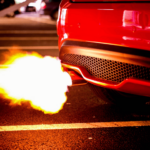
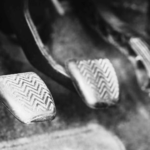
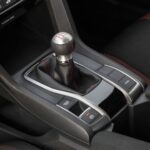

![Interference Engine List [and Non-Interference Engine List] interference engine list](https://roadsumo.com/wp-content/uploads/2021/06/interference-engine-list-150x150.jpg)
![Check Engine Light On and Off Intermittently [Causes and Fixes] check engine light on and off](https://roadsumo.com/wp-content/uploads/2021/06/check-engine-light-on-and-off-150x150.jpg)
